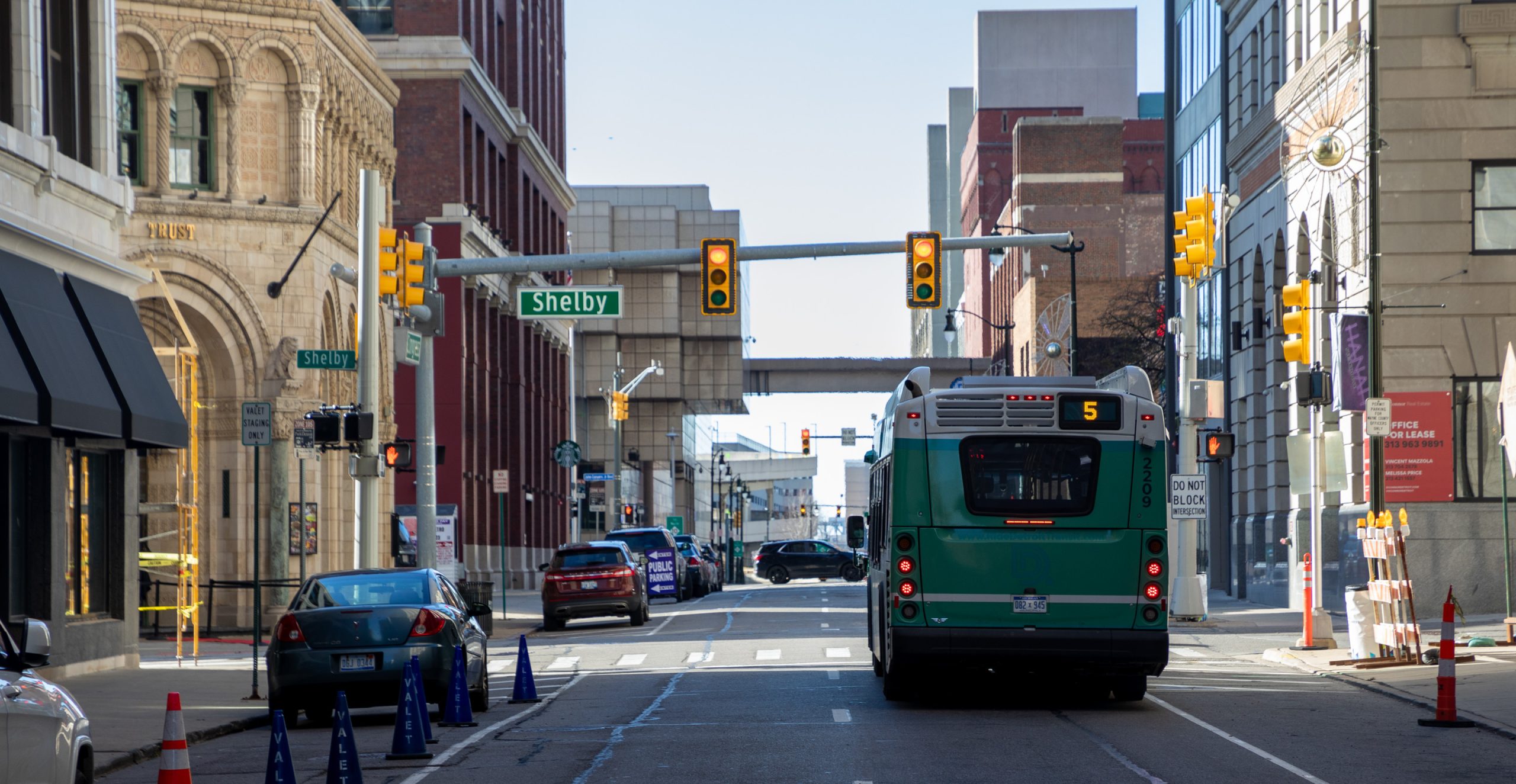When Nishi Bajaj was studying for her bachelor’s degree in textile design at the National Institute of Fashion Technology in Gandhinagar, Gujarat, India, events for designers were more like exhibits. Artists, usually working in the same medium, sent in their work for others to interpret, typically without the artist being present to talk about the work.

Bajaj, 27, earned her first master’s degree from the Indian Institute of Technology – Hyderabad. And not long after that, the possibility of meeting artists from different worlds drew her to pursue a second master’s degree — this time, in Detroit — at College for Creative Studies (CCS) starting this fall. She kicked off the semester with a whirlwind tour of the city’s design community while attending Detroit Month of Design for the first time.
At design events in Detroit, “you can just go and speak to someone,” Bajaj said with a laugh. “You can (connect) online, you can talk about design, you can have a discussion.”
Detroit Month of Design, which started as a weekend festival 13 years ago, wraps up Saturday. This year’s fest brought emerging and established designers together to showcase their latest work at more than 70 events across the city, from gallery tours to parties and design challenges.
Bringing designers together from across the world
Month of Design is organized by Design Core Detroit, which offers support services to designers and advocates for design-driven businesses. Its Detroit Design Network included 114 members last year, of which about half were woman-owned and a quarter minority-owned. The nonprofit also led the effort to establish Detroit as a UNESCO City of Design, the first and only city in the U.S. to earn the designation reserved for cities that identify “creativity as a strategic factor for sustainable urban development.” That designation is part of what attracted Bajaj to Detroit.
At this year’s festival, she attended a few events, starting with the opening ceremony, where she immediately noticed the diversity in artists’ experiences and cultural backgrounds. She met designers who had traveled to Detroit from other countries, such as Brazil, Spain and Italy, and learned about how culture influences artists’ work.
The festival was unique for her, she said, because she was able to mingle with designers, rather than only engage with their work, and designers were encouraged to “bring their own cultural essence.”

“Everyone has a different style, and it’s difficult to (connect) on social media,” Bajaj said. “Events bring a lot of people together.”
Designers weren’t just from various places — they specialized in various mediums.
A festival highlight for Bajaj was “Mending The Net,” a group show from Fiber Club* Detroit, where she mingled with dozens of traditional and contemporary fiber and textile-based artists.
“There were the organic textiles, there was a lot of sustainability, and such major issues to touch upon, like how people are trying to make an impact,” Bajaj said. “It was like a combination of art and technology.”
Connecting art with pressing problems
Bajaj’s major at CCS is color and material design, setting her up for work designing companies’ products and branding. Bajaj hopes to work in the automobile industry or technology. Rather than technological advances like electric vehicles or smart cruise control, it’s the little design details that keep her preoccupied.
Month of Design was both a social experience and a chance to broaden her perspective in her industry.
“It gave me an opportunity to have a great time and understand design philosophy across different paradigms,” Bajaj said.

Understanding the intersection of art and societal issues is a running thread of Month of Design. Some events at the festival, such as the Sept. 23 documentary screening hosted by Designing Justice + Designing Spaces, invite community members and designers to explore solutions to systemic challenges through art.
Bajaj said discussions about climate change, literacy, sustainability and innovation within the context of Detroit’s design scene were inspiring.
“You get to learn through community-based work where you get to collaborate,” Bajaj said. “You get to see things and critique them. It’s nice.”
Bajaj is only beginning her coursework at CCS, but she’s already planning to find a job in the U.S. for a stint after she graduates. She wants to take advantage of the Motor City, using her skills to improve the automotive industry.
That is something she didn’t get from this year’s Month of Design events that she wished was included: a chance to debate with auto or tech industry executives on ways to fix local problems. But overall, Month of Design made her more eager to study in Detroit, Bajaj said.
“I’m looking forward to the next,” Bajaj said.
People can stay up to date on Month of Design events on their website. The festival ends Saturday, with closing parties, workshops, artist markets and exhibits.
Correction: This story has been updated. Bajaj’s major is color and material design, not color material design.




